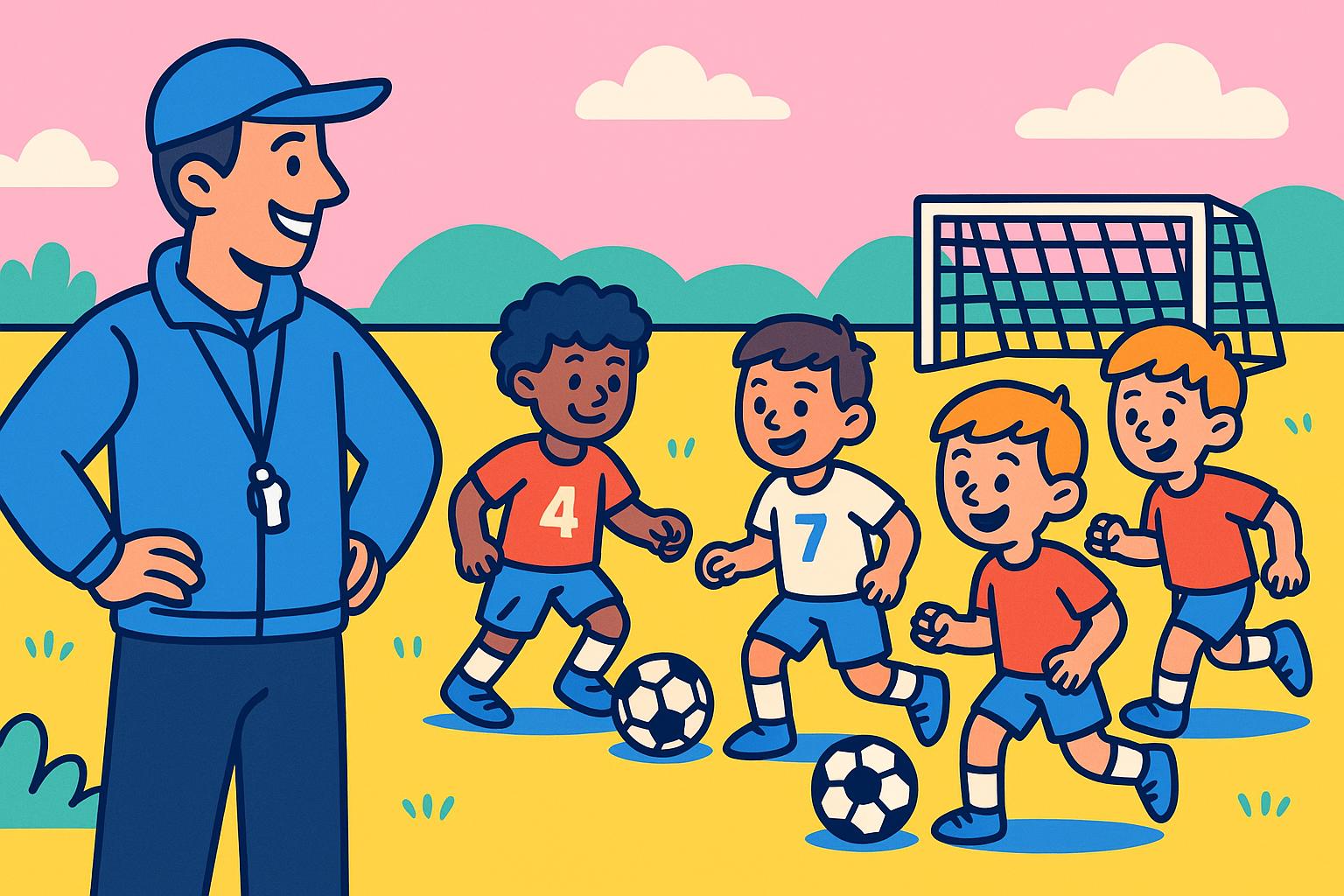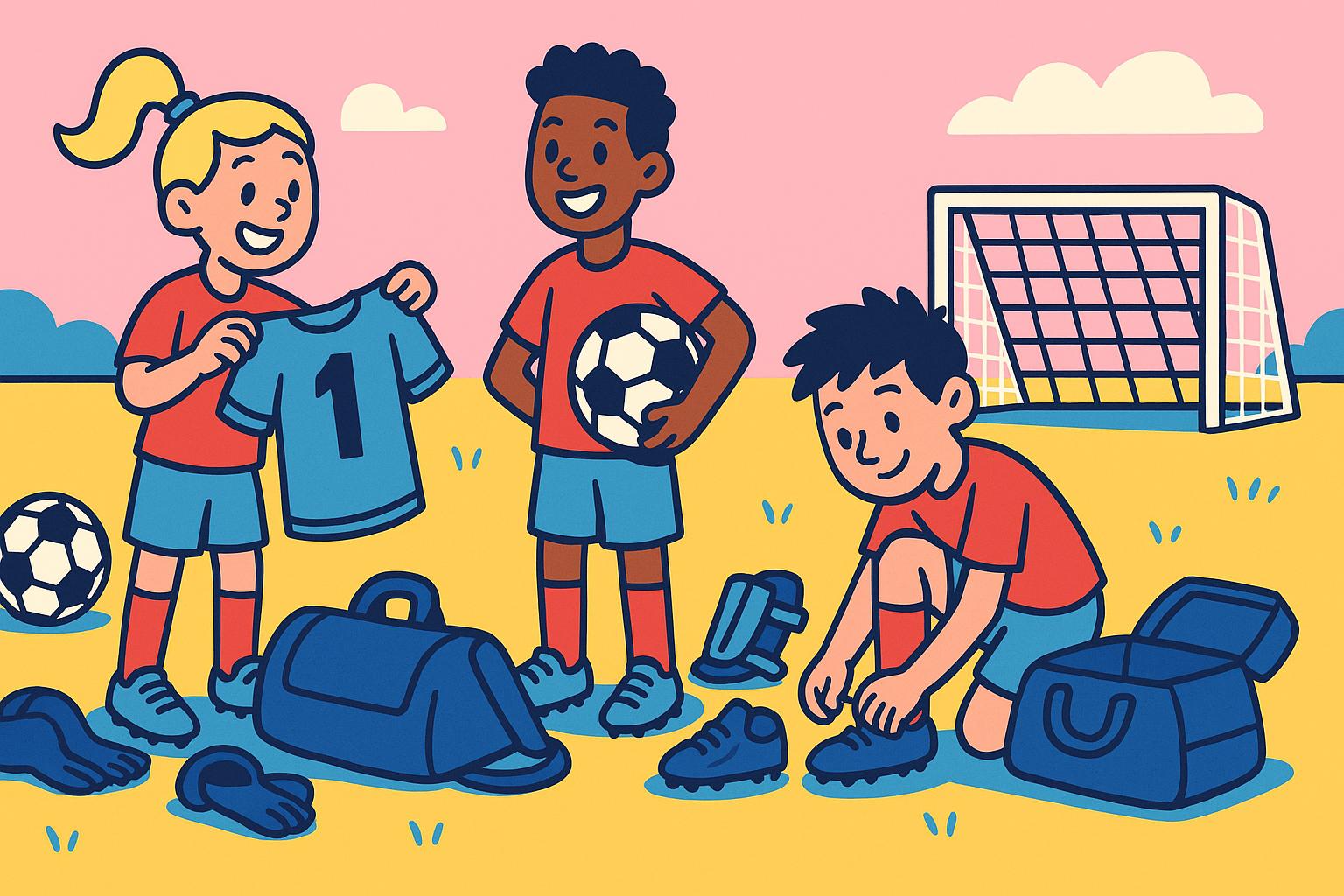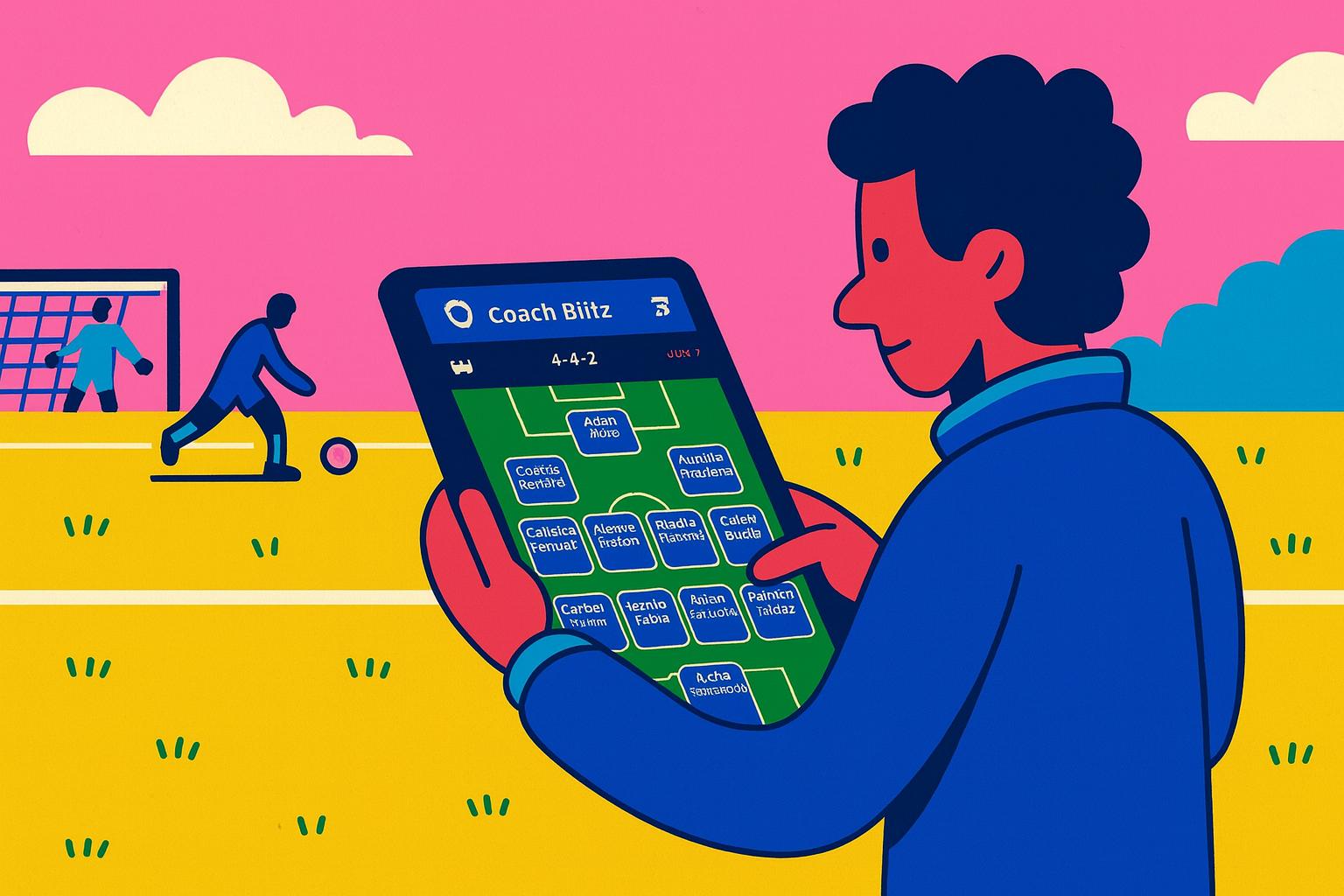
Your First Soccer Game as Coach
Your first soccer game as a coach doesn’t begin when the referee blows the whistle — it starts days earlier. The players might be thinking about the match only on game day, but for the coach, preparation is a longer process. From early communication with the team to reviewing stats after the final whistle, each step matters. In my experience, getting the details right not only keeps you calm, it helps your players feel ready too.
Days Before the Game — Communication and Organization
A smooth game day starts with clear communication. I make sure every player and parent knows the essentials well in advance: where the game will be, what time it starts, when to arrive, and what to bring. For most soccer teams, that means the full uniform — jersey, matching socks, shin guards, and league-approved cleats. If they’re playing goalkeeper, they’ll also need a keeper’s shirt and gloves. At the recreational level, that equipment is sometimes provided by the coach or the league, so one way or another, know what to expect and prepare accordingly.
I also remind players to bring their own water — staying hydrated is critical, and relying on shared bottles is never ideal. And whenever possible, I encourage each player to bring a ball. Even if we have enough for the team, having extras makes warm-ups more efficient and avoids delays if one goes missing.
💬 Coach’s Tip: Clear, early communication prevents last-minute sideline problems and helps everyone arrive ready.
I’ll confirm if refreshments are needed and coordinate who’s bringing them. Even a short game can leave players worn out, and having a plan for post-game snacks keeps things running smoothly.
This is when I’ll use Coach Blitz to track availability. Knowing exactly who will be there allows me to plan my starting lineup and substitution strategy days ahead. By the time we get to the field, I already have a plan — and a backup plan.

Just Before Kickoff — Warm-Ups and Lineups
On game day, I expect players to arrive at least 15 minutes early — earlier if we’re at an unfamiliar field or in a competitive setting. I arrive well before that to check the field, confirm we have all the equipment, and make sure everything is in order. Arriving early creates a buffer for unexpected hiccups and ensures we can start warm-ups on time.
I make a point of giving starting spots to players who arrive prepared and on time. I want them to see that discipline and punctuality matter — not just for the team’s performance, but for their own growth as reliable teammates.
Once players check in, I’ll mark attendance in Coach Blitz and finalize the starting lineup. Warm-ups are familiar and purposeful — no brand-new drills. The goal is to get bodies moving, minds focused, and confidence up before the whistle blows.

During the Game — Coaching in the Moment
Once the match starts, my role shifts to guiding, encouraging, and managing the team’s flow. With Coach Blitz, I can manage substitutions without losing track of who’s played how long. I can also log goals, assists, and other key stats as they happen, along with the time remaining in the half. It takes seconds, and it keeps me focused on the game instead of fumbling through mental notes.
💬 Try This: Keep sideline instructions short and positive — “Stay with your mark,” “Look for the pass,” “Nice hustle.” Too much detail mid-game can overwhelm players.
After the Final Whistle — Reflection and Next Steps
When the game ends, I gather the team for a short huddle. Win or lose, I highlight effort, teamwork, and one or two points for improvement. Then I thank the parents and anyone who helped — it’s part of building a respectful, connected team environment.
Before the players leave, I remind them to take home everything they brought — water bottles, jackets, extra gear, even the ball they warmed up with. It’s a small habit that prevents unnecessary headaches for everyone.
After the players head home, I’ll review the stats in Coach Blitz. Goals, assists, playing time, and player ratings are all there, ready to guide my next practice plan. If our passing accuracy was low, we work on that. If certain players stood out in leadership or effort, I can encourage those traits next time.
Game day moves fast, but when you’ve handled the details ahead of time, you’re free to actually coach. From early communication to the last whistle, preparation turns nerves into focus. And that focus — for both you and your players — is the foundation of a strong season.
Remember, you don’t have to treat these ideas as strict prescriptions. Think of them as tools you can adapt. Every team is different, and part of growing as a coach is finding the system that works best for you and your players.
— The Coach